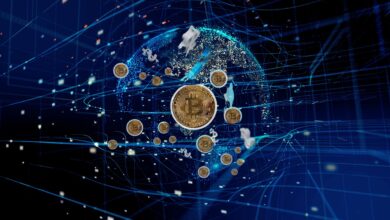Embracing the XNewNorm: Navigating the Future of Change

In a world that is constantly evolving, the concept of XNewNorm emerges as a crucial framework for understanding and adapting to rapid changes in various sectors. This term encapsulates the shift towards new paradigms, whether in technology, business, social structures, or personal lifestyles. Embracing the XNewNorm involves not just accepting change but actively navigating it to thrive in an ever-transforming landscape.
Understanding XNewNorm
The term XNewNorm represents the intersection of change and adaptation. It signifies a shift from old norms to new standards that are emerging in response to global trends and disruptions. This new norm is not a single change but a collection of evolving standards and practices that redefine how we approach different aspects of life and work.
The Drivers of XNewNorm
Several factors drive the emergence of the XNewNorm. These include:
- Technological Advancements: Rapid developments in technology, such as artificial intelligence, blockchain, and quantum computing, are continuously reshaping industries and everyday life. These technologies bring new capabilities and efficiencies, leading to shifts in how we interact with the world.
- Globalization: The increasing interconnectedness of the global economy and culture has led to the blending of diverse practices and norms. This interconnectedness fosters the adoption of new standards and practices across borders.
- Pandemic Impacts: The COVID-19 pandemic accelerated many changes, including remote work, digital transformation, and a heightened focus on health and safety. These changes have become new norms in their own right.
- Environmental Concerns: Growing awareness of climate change and sustainability issues is pushing individuals and organizations to adopt new practices that prioritize environmental responsibility.
- Social Movements: Shifts in societal values and increased awareness of issues such as diversity, equity, and inclusion are driving changes in how institutions and individuals operate.
Navigating the XNewNorm
To successfully navigate the XNewNorm, individuals and organizations need to adopt a proactive and strategic approach. Here are key strategies for embracing and thriving in this evolving landscape:
- Continuous Learning and Adaptation: Staying informed about emerging trends and acquiring new skills are crucial for remaining relevant. Embracing lifelong learning helps individuals and organizations adapt to new technologies and methodologies.
- Agility and Flexibility: The ability to quickly pivot and adjust strategies in response to new developments is essential. Agility allows for faster decision-making and implementation of changes.
- Innovation and Creativity: Encouraging a culture of innovation and creativity can lead to the development of new solutions and approaches. Embracing the XNewNorm often involves thinking outside the box and experimenting with novel ideas.
- Resilience and Risk Management: Developing resilience and effective risk management strategies helps in coping with uncertainties and potential setbacks. Preparing for various scenarios and having contingency plans in place can mitigate the impact of unexpected changes.
- Collaboration and Networking: Building strong networks and fostering collaboration can provide valuable insights and support. Engaging with others who are also navigating the XNewNorm can offer new perspectives and opportunities for growth.
- Ethical Considerations: As new norms emerge, it is important to consider the ethical implications of changes. Ensuring that new practices align with ethical standards and promote positive societal impacts is crucial.
Case Studies of XNewNorm in Action
To illustrate the concept of XNewNorm, let’s examine a few case studies:
- Remote Work and Digital Transformation: The shift to remote work during the pandemic has become a new norm for many organizations. Companies that successfully transitioned to remote work have leveraged digital tools to maintain productivity and collaboration. This shift has also led to the development of new work models and practices, such as hybrid work arrangements.
- Sustainable Practices in Business: Many companies are adopting sustainable practices as part of their new norm. For instance, businesses are investing in renewable energy, reducing waste, and implementing circular economy principles. These changes are driven by both consumer demand and regulatory pressures.
- Diversity and Inclusion Initiatives: Organizations are increasingly prioritizing diversity, equity, and inclusion (DEI) as a new standard. Implementing DEI initiatives involves revising hiring practices, fostering inclusive work environments, and addressing systemic biases.
The Future of XNewNorm
As we move forward, the XNewNorm will continue to evolve, driven by ongoing advancements and changing societal expectations. Adapting to these changes requires a mindset of openness and resilience. By embracing the XNewNorm, individuals and organizations can position themselves to not only survive but thrive in a future characterized by rapid change and innovation.
In conclusion, embracing the XNewNorm is not just about reacting to change but proactively shaping the future. By understanding the drivers of change, adopting strategic approaches, and remaining adaptable, we can navigate the complexities of the new norm and build a more resilient and innovative future.
Continuing the Journey with XNewNorm
As we delve deeper into the implications of the XNewNorm, it becomes evident that this paradigm shift requires a comprehensive approach to not only cope with change but to lead and shape it. Here are some additional aspects to consider as we continue navigating this evolving landscape:
Embracing Technological Integration
One of the cornerstones of the XNewNorm is the integration of technology into various facets of life and business. This includes:
- AI and Automation: Artificial intelligence and automation are revolutionizing industries by enhancing efficiency and enabling new capabilities. Embracing these technologies can streamline operations, reduce costs, and foster innovation. However, it is also important to address concerns such as job displacement and ethical considerations related to AI.
- Data-Driven Decision Making: The ability to harness and analyze data effectively is crucial in the XNewNorm. Data-driven insights can inform strategic decisions, personalize customer experiences, and identify new opportunities. Organizations need to invest in data infrastructure and analytics capabilities to leverage this advantage.
- Cybersecurity: As digital transformation accelerates, cybersecurity becomes increasingly important. Protecting sensitive information and ensuring secure digital interactions are vital for maintaining trust and compliance. Organizations should prioritize robust cybersecurity measures and stay informed about emerging threats.
Redefining Leadership and Organizational Culture
The XNewNorm also impacts leadership styles and organizational culture:
- Adaptive Leadership: Leaders must be agile and adaptable to guide their teams through change. This involves being open to new ideas, fostering a culture of experimentation, and supporting employees through transitions. Adaptive leaders are crucial in steering organizations through uncertainty and change.
- Employee Well-being: The focus on employee well-being and work-life balance has gained prominence. Organizations that prioritize mental health, provide flexible work arrangements, and support personal development create a more engaged and productive workforce.
- Inclusive Culture: Building an inclusive culture that values diverse perspectives and backgrounds is essential. This involves not only implementing DEI initiatives but also embedding inclusivity into the organizational fabric. An inclusive culture enhances collaboration, creativity, and overall performance.
Navigating Social and Environmental Impact
The XNewNorm also involves a heightened awareness of social and environmental impacts:
- Corporate Social Responsibility (CSR): Companies are increasingly expected to contribute positively to society. CSR initiatives can include supporting community projects, promoting ethical practices, and engaging in philanthropy. Demonstrating a commitment to social responsibility can enhance brand reputation and customer loyalty.
- Sustainable Development Goals (SDGs): Aligning with the United Nations’ SDGs can guide organizations in addressing global challenges such as climate change, poverty, and inequality. Integrating sustainability into business practices not only meets regulatory requirements but also drives long-term value creation.
- Consumer Expectations: Consumers are more informed and conscious of the impact of their choices. Businesses must adapt to these expectations by offering sustainable products, transparent practices, and ethical sourcing. Meeting consumer demands for responsible practices can differentiate brands and drive growth.
Preparing for Future Disruptions
While the XNewNorm provides a framework for navigating current changes, it is also important to prepare for future disruptions:
- Scenario Planning: Engaging in scenario planning helps organizations anticipate potential disruptions and develop strategies to address them. By exploring various future scenarios, businesses can identify risks and opportunities, ensuring they are better prepared for uncertainty.
- Continuous Improvement: Embracing a mindset of continuous improvement allows organizations to remain competitive and responsive. Regularly evaluating and refining processes, strategies, and technologies ensures that they stay aligned with evolving norms and trends.
- Fostering Innovation Ecosystems: Collaborating with startups, research institutions, and industry partners can drive innovation and accelerate adaptation. Building innovation ecosystems encourages the exchange of ideas, access to new technologies, and collaborative problem-solving.
Conclusion: Leading the Way in the XNewNorm
Navigating the XNewNorm requires more than just adapting to change; it involves leading the way and shaping the future. By embracing technological advancements, redefining leadership, addressing social and environmental impacts, and preparing for future disruptions, individuals and organizations can thrive in an ever-changing world.
The XNewNorm represents a new era of possibilities and challenges. It calls for a proactive and strategic approach to change, one that leverages opportunities, addresses risks, and fosters resilience. As we continue on this journey, embracing the XNewNorm will be key to unlocking new potentials and achieving success in the future.
In essence, the XNewNorm is about more than just adapting to change—it’s about driving it. By understanding the dynamics at play and positioning ourselves effectively, we can not only navigate the future of change but also lead and influence it in meaningful ways.
FAQ,s
1. What is the XNewNorm?
Answer: The XNewNorm refers to the evolving set of standards and practices emerging in response to rapid changes across various sectors such as technology, business, social structures, and personal lifestyles. It represents a shift from traditional norms to new paradigms that address contemporary challenges and opportunities.
2. What factors are driving the XNewNorm?
Answer: Key drivers of the XNewNorm include technological advancements (such as AI and blockchain), globalization, the impacts of the COVID-19 pandemic, environmental concerns, and social movements focusing on diversity, equity, and inclusion. These factors collectively influence how norms and practices are evolving.
3. How can individuals and organizations adapt to the XNewNorm?
Answer: To adapt to the XNewNorm, individuals and organizations should focus on continuous learning and adaptation, agility and flexibility, innovation and creativity, resilience and risk management, collaboration and networking, and ethical considerations. These strategies help in staying relevant and thriving amidst change.
4. What role does technology play in the XNewNorm?
Answer: Technology plays a central role in the XNewNorm by driving advancements that reshape industries and daily life. Technologies like AI, automation, and data analytics are crucial for enhancing efficiency, enabling new capabilities, and informing decision-making. Embracing these technologies is essential for staying competitive and innovative.
5. How does the XNewNorm impact leadership and organizational culture?
Answer: The XNewNorm influences leadership and organizational culture by emphasizing the need for adaptive leadership, prioritizing employee well-being, and fostering an inclusive culture. Leaders must be agile and supportive, while organizations should focus on creating a positive and inclusive work environment.




